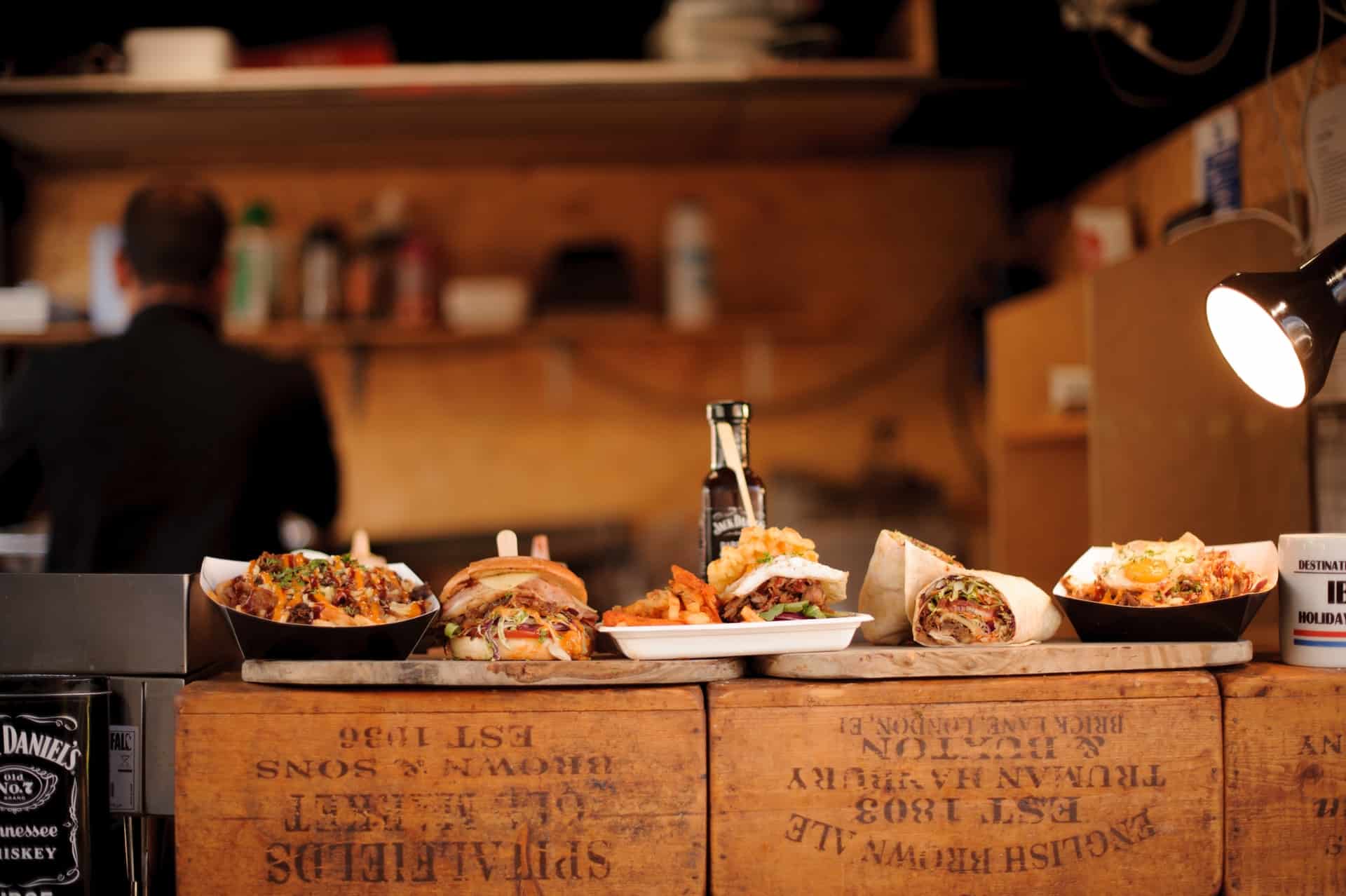We conduct a fast food industry analysis with the help of Porter's Five Forces Model, SWOT, and PESTLE analysis to gain insights into the food industry.
Today's article is very special since the topic we've chosen is really close to my heart. As a fast food lover, I can write pages and pages on it, but I don't want you guys to get bored, so I'll control my emotions and only write what is required.
Do you guys ever think how blessed we are? I mean, the world was made billions of years ago, and since then, people have been born. But, out of all, God knows how many generations we were born at a time when fast food existed. Isn't it awesome?
Okay, time to control my love for fast food. However, today's article will be fascinating as we look into the fast food industry. How it all started, and what is its current position in the market.
To get a complete insight into the industry and its environment, we will conduct a Fast Food Industry Analysis.
Before we jump into the analysis part, let's look at how we got blessed with such a tasty and mouth-watering food option.
When we think of the fast food industry, we assume it must have been established one or two centuries back. Well, some part of it is true since the fast food industry's major developments happened in the late 19th century, but the roots of fast food can be traced back to the 2nd century.
Let's look at the history of the fast food industry. We find that the concept of fast food originated in the 2nd century at the time of the Han dynasty. At the time, people used to cook their meals in their homes.
However, street stalls and restaurants that provided ready-made noodles and other meals were present for travelers and other people who couldn't cook in their homes. That's actually when the concept of fast food was initiated.
Later the industry evolved with time, and then in the late 19th century, the first fast food restaurant, with whom we can relate, was established in Britain. This restaurant offered Fish and Chips like any typical fast food restaurant would offer.
From there onwards, people started consuming fast food, and its demand kept on increasing. As a result, the fast food industry began to grow across the globe, and today here we are in a world full of fast food chains.
Currently, the fast food industry is worth $862.05 billion, and it is predicted to continue to grow at a rate of 6.05% in the next six years.
There are countless fast food chains present across the globe in the fast food industry. Two of the most renowned fast food chains, Mcdonald's and Subway alone, have around 80,000 restaurants worldwide.
The fast food industry also provides employment to millions directly and indirectly. It is estimated that alone in the US, 36,834 people are working in the fast food industry directly.
Now that we have discussed how and when the fast food industry came into being and what is its current position in the market. Let's carry out fast food industry analysis to analyze the industry more critically.

Fast Food Industry Life Cycle
To conduct an industry analysis, it is necessary first to construct the life cycle of an industry. So, in this section, we will construct the fast food industry's life cycle and highlight at what stage the fast food industry is currently operating.
An industry life cycle is divided into five parts. The very first stage of the life cycle is the startup stage. After that, the growth stage is experienced, which leads to the shakeout stage. Then an industry enters the fourth stage of the life cycle, the maturity stage, and then the decline stage is observed.
Startup Stage
This is the first stage of the life cycle. This stage represents the early days of an industry when only a few companies are present in the industry, and not many people are aware of the product they are selling. At this time, companies are trying to attract customers to increase their customer base.
The fast food industry went through the startup stage in the late 19th century when the first Fish and Chips outlet opened in 1860 in Oldham, Uk. At this time, no other fast food restaurant was present. Hence, fast food was a new phenomenon yet to be discovered entirely.
Growth Stage
As the name suggests, in this stage, the industry starts to expand as more companies jump into the industry. In this stage, profits are earned, and companies try to increase their market share by using innovation.
The growth of the fast food industry started in the 20th century when several different fast food restaurants came into play. Then, in 1902, Joseph Horn and James Hardart established the first Automat in New York. Getting fast food through a machine was considered a big deal back then as it helped attract more customers.
Shakeout Stage
The shakeout is the third stage of the industry life cycle. It arrived after newly arrived companies had made profits, but now strong companies with more significant market share push out the weak companies to maximize their profits.
Initially, when the wave of fast food hit the world, many fast food brands jumped in. However, as time passed, top brands like McDonald's, Subway, Pizza Hut, Burger King, etc., started capturing the market in the 21st century. As a result, all the weak brands got pushed out of the market.
The market further got filtered recently due to COVID-19 when the demand for fast food declined. As a result, many weak brands left the market, and only strong brands with a vast customer base remained in the business. Currently, the fast food industry is in the shakeout stage, looking forward to entering the maturity stage.
Maturity Stage
After the shakeout stage, an industry enters the maturity stage. In this stage, companies strive hard to achieve growth. However, when the industry has matured, it is hard to attain growth since the industry is already working at its full potential.
The fast food industry has yet to see the maturity stage. The industry is growing at a good rate of around 6% and is expected to grow at the same rate in the next six years. Still, there are a lot of opportunities for companies to achieve growth and gain profits from the fast food industry.
Decline Stage
This is the last stage of the industry life cycle. After an industry gets mature, it heads towards its decline. In this life cycle stage, the industry begins to lose market share. This could happen as a result of new substitutes available to consumers.
The fast food industry hasn't seen a decline yet, and its decline seems quite far away. The demand for fast food is still increasing daily, and no real substitute for fast food has arrived on the market yet.

Assessing the Competition: Porter's Five Forces Model
Now that we are done constructing the life cycle of the fast food industry, let's proceed further and assess the competition in the fast food industry by using Porter's five forces model.
Competitive Rivalry
This is the first factor of Porter's five forces. This factor highlights the competition faced by new entrants in an industry, such as product quality and price wars.
Competition in the fast food industry is very high since newly entering brands must compete with well-established top fast food brands. These already existing brands have achieved economies of scale. Hence, they can produce at a low cost.
Supplier Power
This factor reflects the ability of suppliers to manipulate the market price. In markets where suppliers are limited, that's where suppliers have actual power.
Suppliers in the fast food industry possess a high power to influence prices. Since suppliers are supplying inputs for food, that is a necessity. This empowers them to set prices for the buyers. Moreover, big fast food chains also avoid switching suppliers to maintain quality. This also gives more power to suppliers.
Buyer Power
This is the third factor of Porter's model. This factor highlights the power of buyers to set prices in the market.
Buyers have a high power in the fast food industry to substitute fast food chains offering similar products. Since the products are similar in nature, this empowers the buyers to consume the product from anywhere where it is better in quality and less expensive.
Threat of Substitution
This factor highlights the continuous threat companies face of getting substituted by their competitors. Companies are substituted mainly by a competitor that offers good quality products at cheaper rates.
Companies operating in the fast food industry face a high threat of substitution since many industry brands sell similar products. The only difference is quality and price.
Threats of New Entry
The last factor of the model highlights the threats companies in an industry face from new entrants in the industry.
Threats of new entry are low in the fast food industry since there are high barriers to entry. High fixed costs, brand loyalty, and brand recognition threaten new companies from entering the market.

Environmental Analysis
To conclude the fast food industry analysis, it is essential to carry out the last step, the environmental analysis. An environmental analysis analyses the industry's environment by highlighting the internal and external factors affecting companies in the fast food industry.
To carry out the environmental analysis, It is essential to use SWOT analysis and PESTLE analysis. Both of these business tools are used to investigate the external and internal factors impacting companies' operations in the fast food industry.
PESTLE Analysis
Pestle analysis is a tool that will help us analyze how different external factors such as political, economic, social, technological, legal, and environmental factors affect companies' operations in the fast food industry.
Political Factors
In case of political tension between two countries, for example, Russia and Ukraine, the governments might ban fast food brands from a particular country. Naturally, this will affect the fast food brands banned negatively since their revenues would now decrease.
Economic Factors
Global inflation observed after COVID-19 and the war between Russia and Ukraine can impact the fast food industry companies negatively since it would cause the prices of the inputs to increase.
Hence, it would make fast food more expensive, and as a result, a fall in demand for fast food could be observed.
Social Factors
Changing trends, such as people shifting to cleaner and healthier diets, can cause a decline in the demand for fast foods. This will make the fast food companies suffer.
Technological Factors
Fast food brands can use the growing reach of social media and the latest technologies to market their products digitally. This can help fast food brands attract customers in no time.
Legal Factors
The fast food industry lies in the industry of food and beverages. Each country has laws and regulations to ensure the quality of the products in this industry. Every fast food brand has to abide by the laws set by the government, or else heavy fines can be imposed.
Environmental Factors
The fast food industry remains in hot waters for using too much paper and packaging by environmentalists. Therefore, fast food brands would have to take measures to operate environmentally friendly, or else penalties can be imposed.

SWOT Analysis
This business tool highlights the strengths, weaknesses, opportunities, and threats that are faced by a food organization.
Strengths
One of the biggest strengths of fast food brands is that they are spread across the globe. This helps them generate revenue from different countries and stops them from relying on a specific region.
Weaknesses
Fast food is generally considered unhealthy. This perception pulls away a lot of customers from consuming fast food. This perception is costing the fast food brands since it leads to a fall in revenue.
Opportunities
With the uproar of social media, fast food brands have an opportunity to use social media platforms for marketing their brand and products digitally. This will increase the demand for fast food. Hence profit margins of the brands would increase.
Threats
Brands working in the fast food industry continuously face threats from their competitors. Since high competition exists in the fast food industry, companies feel threatened that their competitor might substitute them.

Fast Food Industry Analysis: Final Word
Finally, we have reached the end of this article so let's go back and summarise whatever we have done so far. We started off by discussing the history of the fast food industry and the value it has currently in the global economy.
Then we began to carry out the fast food industry analysis. First, we constructed the life cycle of the fast food industry. Then we analyzed the competition in the fast food industry with the help of Porter's five-factor model.
After that, we conducted an environmental analysis of the fast food industry with the help of SWOT and PESTLE analysis. I hope you guys enjoyed reading this article!


